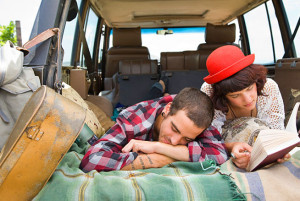NSW Drink driving is a crime. It’s a message that’s been hammered home repeatedly for nearly 25 years.
The good news is that this law, combined with Random Breath Testing (RBT), is estimated to have saved more than 6,000 lives since 1982.
The bad news is that too many people still die on our roads as a result of NSW drink driving – in 2009 nearly one in every five fatal crashes involves NSW drink driving.
The figure is even higher in the country where about one quarter of fatal crashes were connected with drink driving.
Random breath testing started in December 1982 in response to a road toll that had been spiraling right out of control. A spokes person from Roads and Maritime Services says:
“Of all the factors that have helped to reduce the road toll in NSW (such as demerit points, tougher penalties, safer cars etc), RBT has played the biggest role,”.
“In its first 10 years alone, RBT was responsible for about 75 per cent of the reduction in the road toll. In 1982 the road toll was about 1,200 people every year, and now it’s down to around 420. RBT has played a major part in the reduction.”
RBT in NSW began with stationary units waving motorists over and police breath-testing drivers after crashes. A couple of years later, each police car was equipped with breath-testing units so drivers behaving in a manner that suggested they might be under the influence of alcohol could be pulled over on the spot.
And now, every police car – including unmarked cars – has an RBT unit and can conduct breath tests.
Blood-alcohol limits
The maximum blood-alcohol level is 0.05. In the ‘60s and ‘70s, the maximum blood-alcohol level was set at 0.08. In response to the continued high incidence of alcohol in crashes, it was reduced in 1990.
In May 2004, a zero blood-alcohol level for L and P plate drivers was introduced to counter the fact that around one third of all NSW drink drivers in fatal crashes were between 17 and 24 years of age, despite the fact they only accounted for about one seventh of licensed drivers. In 1985 the 0.02 level was first introduced for provisional licence holders.
That means, quite simply, that until you have a full licence you cannot drink any alcohol and drive.
A huge fleet
“The chances of being caught if you drive under the influence of alcohol are now greater than ever. Any police officer, at any time, can administer a breath test” says Sergeant Ben Macfarlane, a NSW Police serving Highway Patrol Officer. And they do; over 4.5 million tests were conducted in 2011.
NSW Police can set up stationary RBT sites, where all cars can be waved down, or to conduct mobile testing on any vehicle they suspect is being driven by someone under the influence.
The number of drivers tested is impressive. Sergeant Ben Macfarlane uses his own area of the Blue Mountains as an example.
“You might have two highway patrol cars set up for a couple of hours out of their shift and possibly do between 100 and 200 tests at a stationary site and then they’ll move around and do another 20 or so mobile tests.”
What happens when you’re tested
An RBT or mobile test operates like this:
A driver is waved or pulled over. “We tell them what we’re doing,” says Sergeant Ben Macfarlane.
“People like to know why they’ve been pulled over, obviously. We tell them what’s required and then we ask for a sample of breath. If they refuse, we give them several chances. If they can’t or won’t supply a sample of breath then they’re placed under arrest for the purposes of a breath analysis and taken to the nearest breath analysis station, which can be an RBT truck or bus, or a police station.”
If the driver supplies a sample of breath during an analysis and is under the limit, they’ll be released without charge. If they’re over the limit during the analysis, the driver will be charged according to whatever their reading is.
Drivers who refuse the breath test and then refuse the breath analysis are charged with ‘refusing breath analysis’, which carries the same penalty as a high-range reading.
When drivers drink
As a working policeman, Sergeant Ben Macfarlane has seen all sorts of behavior from drivers under the influence when they’re confronted by an RBT.
“People do all sorts of crazy things,” he says. “You’ve got your basic level of a social drinker who can’t comply with your directions. Then there are people who stop in the middle of the road in busy traffic. You’ve got your next level of people, who will try to get away from the police, who’ll turn-off, do U-turns, turn their lights off and pull over, swap drivers.”
“And then you go up the scale and there’s people who might have more to hide: the car might be unregistered, they may already have been disqualified, or it might be a stolen car. Obviously, they don’t want to be pulled over so they’re going to do all manner of things: shoot through the RBT site, turn back and go the other way. Sometimes people will come quite happily into the site and as soon as we ask them to get out of the vehicle, then they take off.”
And then, of course, there are the scarily drunk people who somehow manage to think they were okay to drive.
“We’ve had people lose control of their bodily functions, in all senses of the word,” says Sergeant Macfarlane. “We’ve had people lose complete control of their emotions. If you could play back a film of what they’d said and done the next day they’d be blown away. We’ve had people not in control of their movements, they may be sluggish or not able to coordinate. So, they’ll be falling over, falling off chairs, and you wonder how they could put themselves behind the wheel.”
There’s no excuse
Sergeant Ben Macfarlane says that faced with the reality of their drink driving, people try to come up with all sorts of excuses.
“People don’t like to take responsibility for what they’re doing and of course they’re very embarrassed,” he says. “Usually they’ve never been pulled over by the police and all of a sudden they’re being told that they’re probably going to lose their licence.”
“I thought I’d be right” is the most common excuse. Sergeant Ben Macfarlane believes this is most often genuine, because people miscalculate how many drinks they can have.
Other excuses include medication interactions with alcohol and emotional issues, such as marriage breakups or job losses but at the end of the day, there’s really no excuse.










